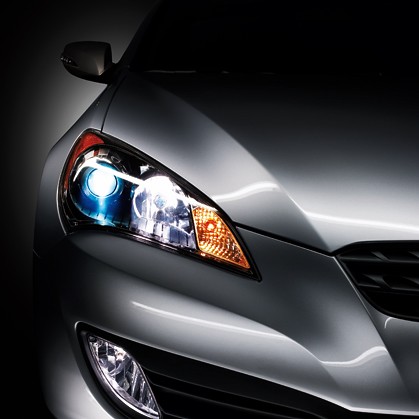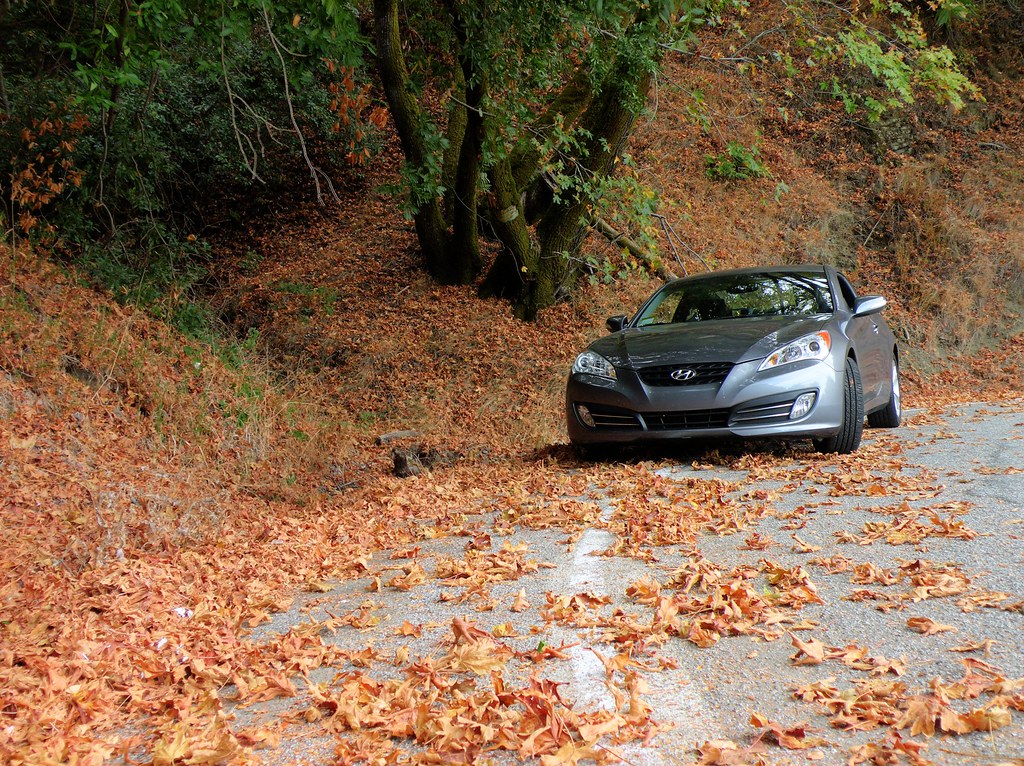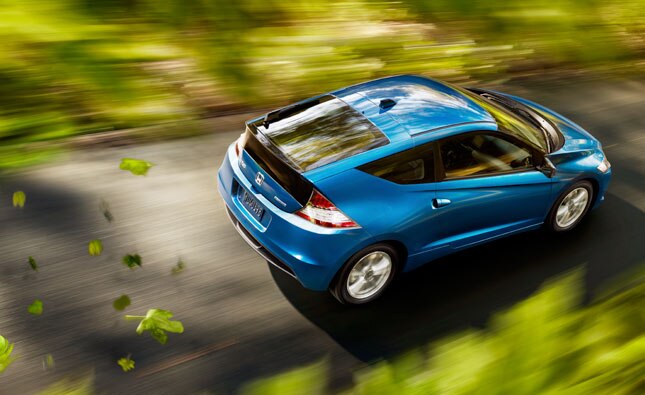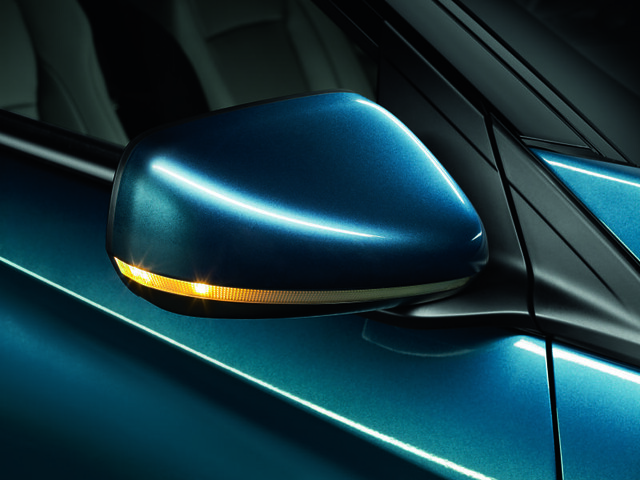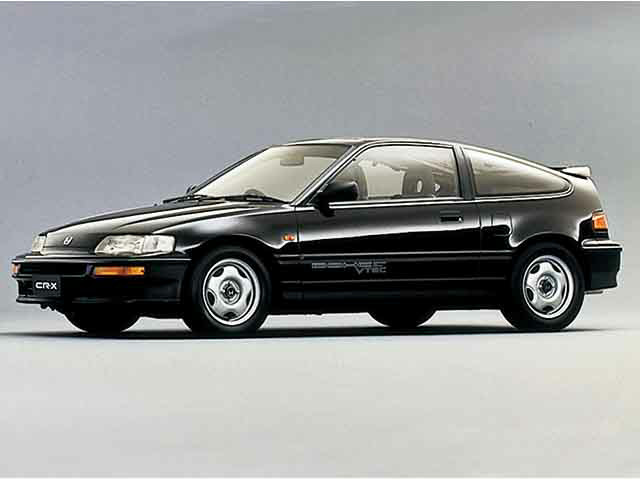While the auto industry was cracking under economic pressures in 2008 and sales were down most auto makers were feeling the heat. But while others were scrambling to make their cars more affordable, sporty, refined, and generally as appealing as they could, Hyundai sat back and enjoyed the fruits of its labour. Global sales may have been down by 15.1%, but you’d never guess if you only looked at Hyundai whose sales actually increased by 25.3% in the first quarter of ’09. And all in one sudden flash it became clear that they were no longer the strange, cheap foreign car manufacturer that we’d remembered. Hyundai alone seemed to be gaining valuable ground on the economic front and began muscling into Honda and Toyota’s territory as they accounted for 7.1% of Canadian light vehicle sales in ‘09, 10% if you count its sister company Kia. All this success can be traced back to just one element: the cars. Hyundai was snatching up all the sales coming from the boom in the compact market by offering cheap, efficient, and reliable compacts and sub-compacts like the Elantra and Accent.
And one good turn deserves another as Hyundai broadened its line up in 2008 to include an entry level luxury sedan called the Genesis, which offered something that no one had anticipated in a entry level luxury coming from an economy company, Rear Wheel Drive. The Genesis met with instant success and earned AJAC’s best new luxury car under 50k, Canadian Car of theYear, North American Car of the Year, and Consumer Reports Top Rated Upscale Sedan. Hyundai was on a roll and quickly solidified a reputation for producing high quality vehicles in just about every segment of the market.
2009 Canadian Car of the Year: The Hyundai Genesis Sedan
With the inspiring success of the Genesis, Hyundai decided to make the hit a one-two punch by adding a variant of the luxury sedan to the market that would cause a completely new stir. Making its debut at the 2008 New York International Auto Show, Hyundai planned to release the Genesis Coupe for the 2010 model year in North America. Hyundai claimed its Coupe was a proper Rear Wheel Drive sports car that would compete with the likes of the RX-8, Infinity G37, and even the BMW 3-Series, and although it realistically competed with the Nissan Altima Coupe, Honda Accord Coupe, Civic Si, and Cobalt SS, the Genesis Coupe was no doubt a fierce competitor that went into the ring radiating passion and breathing fire.
A rally version of the Genesis Coupe
The Coupe gained valuable publicity from an ad campaign that allowed individuals to edit footage from a project called “epic lap” in which professional stunt driver and drift champ Rhys Millen passionately lapped a course in the Coupe, and post it to edityourown.com. The best edited version of the epic lap would be shown during the Super Bowl and the editor would receive both a cash prize and their own Genesis Coupe. Since then, the Coupe has appeared on TV in series like Leverage, Burn Notice, and 24.
Meant to be a balance of “Brain and Brawn” as Hyundai puts it, the Genesis Coupe offers a 55/45 weight distribution for more neutral handling on the track, RWD for tossability in the corners, and a variety of engines for versatility in real world driving conditions. The base 2.0L four cylinder is turbo charged and good for 210 horses and 223lb. ft at only 2000rpm that clocks a 0-100km/h time of just 8.3 seconds! The turbo charger is sourced from Mitsubishi, resembling the turbo installed in the Evo X, and provides a smooth charge throughout the powerband. Because power starts at just 2000rpm and hp is maxed out at 6000rpm the power band is rather large in the 2.0T base model. The optional 3.8L naturally aspirated Lambda V6 is sourced from the Genesis sedan and is a step up with 306hp and 266lb. ft. which improve 0-100 time to just over 6 seconds!
The engine turns over at a higher than average rate for highway driving at 2600rpm for 100km/h, although a wider ratio would improve the already adequate 10.1/6.6 city/hwy mileage, its closer than average transmission can also be a boon on the track where torque can be capitalized on in various situations and at higher speeds. Still, the engine can drink both regular unleaded and high octane for added versatility, and the low end torque also means driving in high gear for improved efficiency is a breeze. Both engines come standard with a 6 speed manual transmission and optional with a 6 speed automatic for an extra $1800 on 3.8s and a 5 speed automatic for $1500 on turbos. Both automatic transmissions come with SHIFTRONIC paddle-shifters that shift quickly and smoothly as far as paddle shifters usually go, and although ST usually discourages automatics, these transmissions might be best for those that have trouble shifting quickly while keeping their focus on the track during a race.
Genesis Coupe with Automatic Transmission and Paddle shifters
Standard features abound on the Genesis Coupe and there’s slight refinement inherited from the Genesis Sedan in the Standard conveniences like A/C, trip computer, Bluetooth with steering mounted controls alongside audio and cruise controls, an iPod input jack located in the centre storage bin, leather wrapped steering wheel and shifter, keyless entry, power locks, windows, and power heated mirrors. And of course standard equipment only gets better if you buy the GT trim which adds 19” alloys, 6.5” touch nav system, Automatic climate control, heated leather seats, 360watt Infinity/AM/FM/XM/CD/MP3 10 speaker audio system with a CD changer, a 3 month subscription to XM satellite radio, push button start, HID and auto-leveling headlights, mirror integrated turn signals, and tilt/slide sunroof.
Complimenting all the conveniences are excellent safety features like advanced front, front seat mounted side, and roof mounted curtain airbags, three point pretensioned seat belts, front active head restraints, fog lights, ABS, EBD, ESC and Traction control. The stability and traction controls are especially useful as they help tame the oversteer and traction loss often found in RWD coupes. Also, the auto-leveling headlights are almost as good as adaptive headlights when it comes to keeping the road visible despite bumps or twists. Of course, while riding in the nearly unusable rear seats is both an ergonomic hazard as well as a safety risk, when it comes to peace of mind while driving all that power, the Genesis Coupe doesn’t settle for anything less than its competitors in the front seats.
 On the outside Hyundai impresses us by hitting a home run on the first pitch with their Coupe’s styling. The exterior is remarkably handsome for a first attempt at a sports coupe. It has a unique blend of shapes and designs that grab attention with some authority. Staggered standard 18” alloys and optional 19” alloys have an attractive 10 spoke design that compliments the sharp headlights, taillights, and fog lights, and together they give the Coupe an aggressive stance that is fitting for a sports car. The longitudinal mounted engine lengthens the hood’s graceful curves down to the petit front grille that surprisingly doesn’t look out of place in the least. Still there is a lingering notion that the best years for the Genesis coupe’s styling are yet to come. But for the moment, the overall design has great continuity and a unique harmony that is well thought out, and is, dare I say, cool?
On the outside Hyundai impresses us by hitting a home run on the first pitch with their Coupe’s styling. The exterior is remarkably handsome for a first attempt at a sports coupe. It has a unique blend of shapes and designs that grab attention with some authority. Staggered standard 18” alloys and optional 19” alloys have an attractive 10 spoke design that compliments the sharp headlights, taillights, and fog lights, and together they give the Coupe an aggressive stance that is fitting for a sports car. The longitudinal mounted engine lengthens the hood’s graceful curves down to the petit front grille that surprisingly doesn’t look out of place in the least. Still there is a lingering notion that the best years for the Genesis coupe’s styling are yet to come. But for the moment, the overall design has great continuity and a unique harmony that is well thought out, and is, dare I say, cool?
From bumper to bumper the Genesis Coupe looks like a true sports coupe
 The interior is classic sports coupe; racing inspired, driver oriented with pretty decent front seats and unusable rear seats. But who really cares about the rear seats in a car like this? The front seats are comfortable enough with both manual height and lumbar support adjusters on the driver’s seat and fore and aft adjustable headrests for longer trips on both driver and passenger seats. Visibility is great out of the front and even out of the side windows thanks to a dropped down beltline on the rear side windows that keep the blind spots to a minimum. However, the view out the back is partially obstructed by the high trunk and further spoiled by the trunk lip spoiler. A few things that will bother most buyers are the fact that the steering wheel only tilts and doesn’t telescope, which is strange considering its importance on a sports car, and space is cramped around the center console. As a matter of fact, elbows are bound to hit the center storage bin during shifts.
The interior is classic sports coupe; racing inspired, driver oriented with pretty decent front seats and unusable rear seats. But who really cares about the rear seats in a car like this? The front seats are comfortable enough with both manual height and lumbar support adjusters on the driver’s seat and fore and aft adjustable headrests for longer trips on both driver and passenger seats. Visibility is great out of the front and even out of the side windows thanks to a dropped down beltline on the rear side windows that keep the blind spots to a minimum. However, the view out the back is partially obstructed by the high trunk and further spoiled by the trunk lip spoiler. A few things that will bother most buyers are the fact that the steering wheel only tilts and doesn’t telescope, which is strange considering its importance on a sports car, and space is cramped around the center console. As a matter of fact, elbows are bound to hit the center storage bin during shifts.
Although the Genesis Coupe and Sedan share the same first name, a decision that will no doubt confuse many, they are nearly incomparable. One of the most important areas where the Genesis Coupe separates itself from its luxury sedan cousin is in its interior quality. Ergonomics SUCK! The engine and road noise is above average, and although it isn’t loud enough to prompt impulsive use of the 360watt sound system it does need more sound insulation. Furthermore, the center armrest is hard, the door panel armrest is hard, and even the dash is hard. But the most outstanding fouls are the power window, lock, and mirror controls which are mounted to the door in a way that suggests the designer only cared about a racy feel and just stuck them on because they had to go somewhere. Operating any of them is awkward at the least. Still, most won’t buy this car for a plush ride and any hint at the Genesis Sedan’s luxury is misleading.
Similarly, the Genesis Coupe isn’t practical. The trunk only holds 332L of cargo and despite being able to store longer items by folding the rear seats, in order to stow anything substantial like a pair of skis one would either need to move the front passenger seat forward, or fold it down as well. Moreover, the rear seats are only good for throwing jackets or other junk on; shame on anyone that subjects their friends to a ride in them. But, again, no one is going to buy this car because they think it’s practical.
On the track the 2.0L turbo is impressive and offered a better weight balance that resulted in more control through corners and better lap times, but the 3.8L was far from clumsy. Granted one might be tempted by the 3.8L optional engine because of its significantly better acceleration, it might not be worth the cost considering the more than adequate power of the standard turbo charged 2.0. Whichever engine you decide on, if handling is a priority the optional GT suspension package should be on your list. Although the standard setup of MacPherson front struts, and a 5-link independent rear suspension is alright, the GT trim gets you a front strut tower brace, larger front and rear stabilizer bars, stiffer springs, larger bushings, a Torsen LSD, and a Brembo brake system which take the Genesis’ agile nature to a new level. The Brembo brake system is pretty impressive and adds Bridgestone Potenza P225/40VR19 front/ P245/40VR19 rear tires, 13.4/13.0 front/rear ventilated rotors and four-piston monobloc fixed callipers. Actually, considering that the Brembo system costs more if bought aftermarket than the entire GT package, the GT package is a frugal choice for enthusiasts. Still, the ride is punishing on broken or rough pavement, and if you’re looking for a comfortable ride don't even try the Coupe.
Hyundai is one of the best in the business when it comes to warranties, and they make no exceptions for their new sports car. The Genesis Coupe comes with Hyundai’s standard 5 year/100,000km bumper to bumper warranty, which means you can drive this sports coupe carefree for 5 whole years. This already stellar warranty can be lengthened to a whooping 8 years/160,000km for just $2,200! If you’re thinking what we’re thinking, you could sell the Coupe after a few years of fun for better than average market value because it would still be under warranty, that is if you ever plan to sell it.
Oh, but we’ve saved the best for last. Hyundai has pulled off a feat of frugality the likes of which never graced the RWD sport segment until now. The base model Genesis Coupe 2.0T will only cost you $24,495. Although the Coupe is just as good as its competitors and doesn’t really need to undercut them, it does it anyway. And it’s not just sitting at a fairly cheap price; it sincerely takes its competition to the cleaners, everyone one of them, from the Mazda RX-8 ($41,995) and Nissan Maxima ($37,880), to modestly priced FFs like the Honda Accord Coupe ($26,790) and even the Honda Civic Si ($25,990)! By offering a RWD turbo charged sport coupe that costs less than a sporty FWD Honda Civic Hyundai has set the value for money bar even higher, and that’s saying a lot considering they are already market leaders in value for money.
Accordingly, the Genesis Coupe is an impressive first attempt at a sports coupe from Hyundai. The styling is unique and attractive, the engine has enough power to dish out an adrenaline rush and the handling and braking are phenomenal. With pricing sitting just below $25,000 the Genesis Coupe gives buyers some serious incentive to choose Hyundai over other makers. The Genesis Coupe is a purpose built sports car with some serious appeal and performance to match, just don't expect any of the Genesis Sedan's luxury or comfort and you'll be one happy driver.





